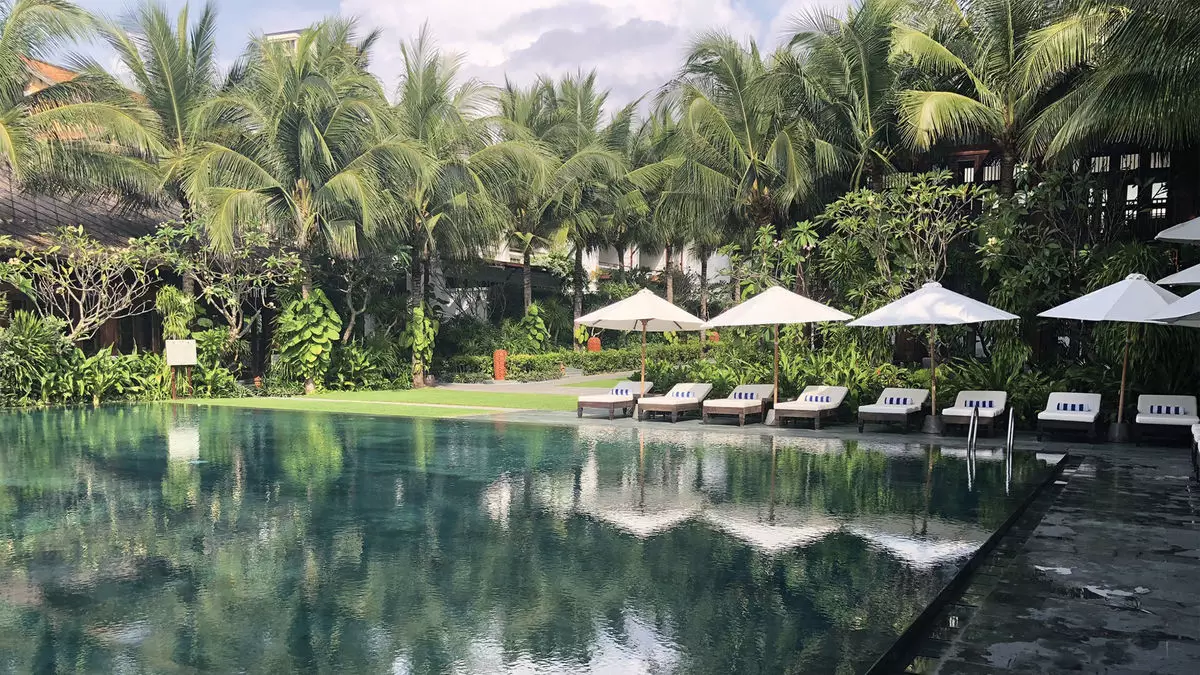After the Vietnam War reshaped the landscape of Southeast Asia, Saigon was reborn as Ho Chi Minh City, in tribute to the revered revolutionary leader. However, the echoes of its former name linger in the hearts and conversations of many, creating a unique blend of historical reverence and modern vibrancy. With its staggering population of approximately 9 million, Ho Chi Minh City stands as a testament to resilience, straddling the serene banks of the Saigon River. This city serves not just as a hub of activity but as an embodiment of Vietnam’s dynamic progress, juxtaposing its turbulent past with its hopeful future.
Walking through the city reveals a tapestry of architectural wonders, including the stunning French colonial hotels—Majestic, Grand, and Continental—all now under government stewardship but still exuding a sense of grandeur from days gone by. Dining al fresco at the Rex Hotel offers a scenic glimpse into the city’s rich history, while the iconic Caravelle Hotel lounges with stories of war correspondents like Walter Cronkite who once broadcast from its rooftop during the Vietnam War. These relics serve as constant reminders of a time where history collided with the everyday lives of locals and tourists alike.
Independence Palace: A Gateway to the Past
A visit to the Independence Palace, formerly known as the Reunification Palace, is an immersion into Vietnam’s history that can be both haunting and enlightening. The architectural design itself is a symbol of political power and social upheaval, reflecting the aspirations and struggles of the Vietnamese people through time. The palace’s underground bunkers and residential wings showcase the dichotomy of opulence and survival that characterized the war years, while the remnants of violence juxtapose against the vivacious life that now thrives in the city.
Interestingly, not far from these historical establishments lies the Pittman Building, where pivotal moments of the American retreat took place. Its rooftop café today serves as a tranquil space, completely transforming what was once a site of desperation into a gathering point for locals and tourists. Here, the haunting history blends seamlessly with the ease of modern life, embodying the duality of remembrance and progress.
The Evolving Narrative of American Veterans
Vietnam’s past reverberates profoundly with U.S. military veterans, many of whom are returning in search of closure, reflection, or reconciliation with a past steeped in conflict. Although the government shunned Western tourists in the years following the war, Vietnam subsequently embraced visitors in 1997, ushering in a new age of tourism. Over the years, the country has attracted approximately 2.7 million veterans and their families, eager to relive past experiences and rekindle lost connections. This ongoing pilgrimage for peace is deeply nuanced; for some veterans, it is an opportunity to find solace in a previously unwelcoming land, while others continue to grapple with their memories.
Tour companies like Military Historical Tours and Vietnam Battlefield Tours have thrived since the normalization of relations, but insights suggest that interest may be waning as the generations who fought age. With many veterans now in their late 70s or even their 80s, the urgency for remembrance and exploration of the battlefield is shifting, impacting the landscape of tourism significantly. The upcoming anniversaries serve as a poignant reminder that while the Vietnamese commemorate their liberation, many American veterans face emotional complexities that remain unresolved.
Young Explorers: A New Wave of Tourism
Contrasting with the narratives of older veterans is a growing trend among younger travelers, many born after the war ended. They flock to Vietnam for its affordability and culinary richness, seeking not only adventure but also a deeper understanding of the nation’s historical complexities. Terri-Ann Mattadeen, a high school history teacher, personifies this shift. For her, the appeal of Vietnam lies in its rich past and accessible present, bolstered by friendly locals and a bustling urban landscape that allows for easy navigation.
Her experiences, shared with a diverse group of fellow travelers, reveal a growing interconnectedness transcending geographic boundaries. The opportunity to share moments like getting tattoos together or spending enriching nights at local homes creates lasting bonds that defy the war’s historical divisions. While visiting sites like the Cu Chi tunnel complex and the War Remnants Museum, it is clear that the focus is on understanding rather than merely recounting a troubled past—an approach that symbolizes the potential for healing and collective growth.
As the rhythm of leisure and history unfolds along the coastline and through the urban playgrounds of Ho Chi Minh City, one is reminded that Vietnam is not defined solely by its war-torn legacy but rather by the spirit of its people and the stories they continue to share, shaping a future built upon peace and resilience.


Leave a Reply